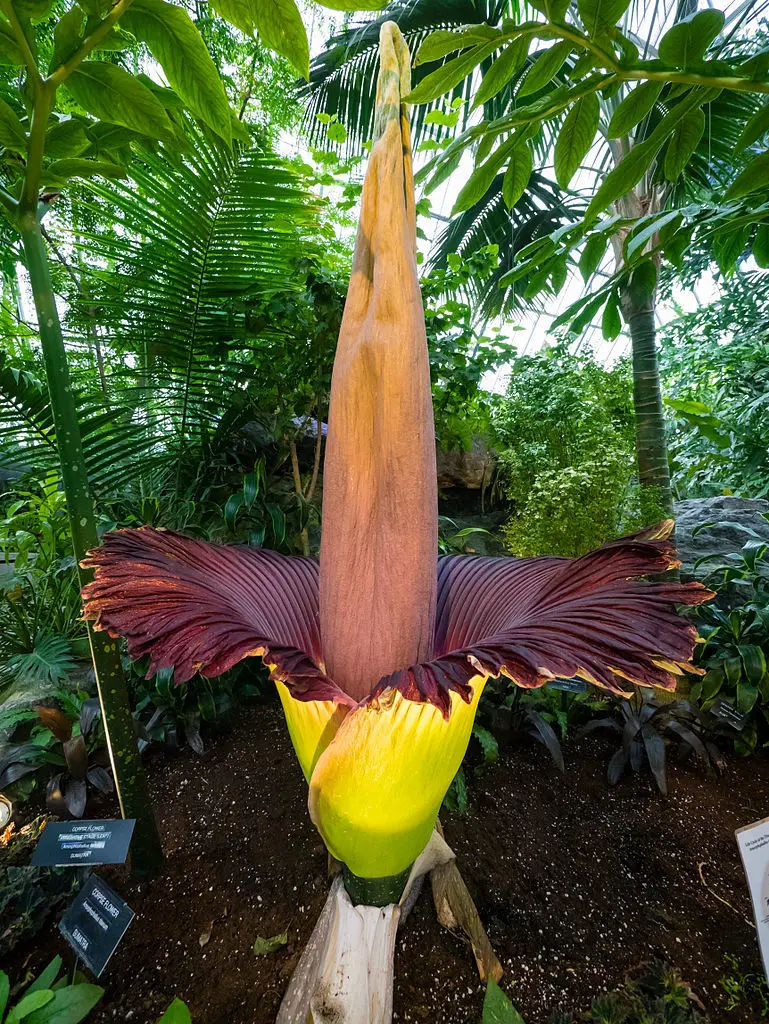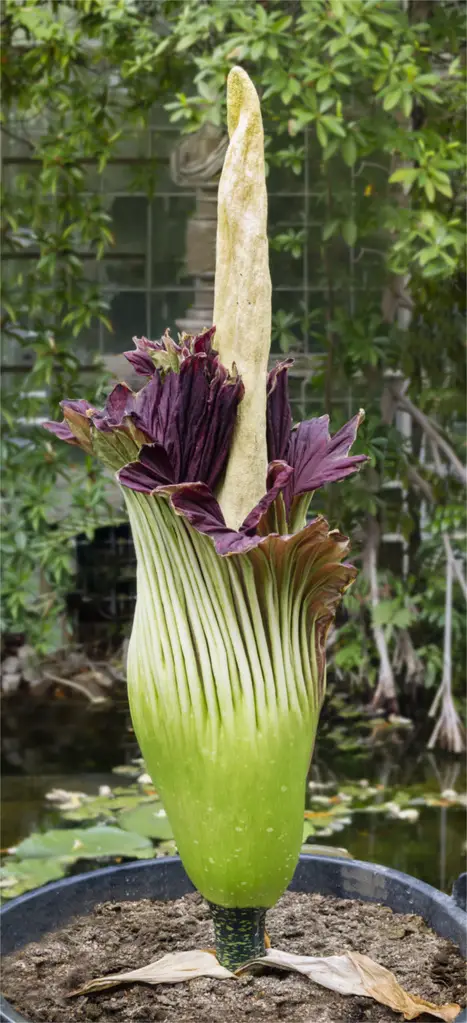
It’s one of the rarest flowering plants in the world and also one of the smelliest. The Amorphophallus titanium, which is better known by its morbid name of the “corpse flower,” produces a large flower that gives off the smell of rotting, decaying meat, and it can take around seven years for the single flower of the plant to bloom.
The plant blooms so rarely that there have only been 303 blooms ever recorded between 1889, when the first bloom was recorded in London, to March 2020.
The plant starts by sending up a huge leaf after a couple of years. It then begins to unfurl the leaf over about a three-week period. The flowering part of the plant then opens after a few hours. When the flower reaches its full bloom, it lets off a strong, noxious odor. The smell lasts between 6 and 12 hours, while the full flower keeps its shape for only 24 hours. The corpse flower then collapses and begins the long process to build up energy to do it all over again.
But why does the corpse flower emit such a foul spell for such a short time? Scientists believe it is the plant’s way of attracting pollinators and those pollinators that are attracted to decaying material such as flesh flies and dung beetles. Even the color of the corpse flower (a dark reddish-purple) is believed to mimic the flesh of a decaying animal.
Another amazing thing the corpse flower can do is raise its temperature. It can warm up to 98 degrees Fahrenheit (36.7 degrees Celsius) to trick the insects it relies on for pollination to come to the flower to look for food. When they enter, they would find that there was nothing there, but they would exit with the pollen of the corpse flower attached to them.
The smell from the corpse flower has been found to be a mixture of chemicals that are in a variety of things in everyday life. Compounds such as dimethyl disulfide and trisulfide are given off which are similar to the odors of garlic and limburger cheese or cooked onions. The smell also contains isovaleric acid, which is the cause of the odor from stinky socks, as well as trimethylamine, which has a fishy smell or that of ammonia at higher concentrations. There are even sweet smells that are mixed in such as benzyl alcohol, which can be found in jasmine, and phenol, which is found in sore-throat sprays. The mix of these chemicals gives the corpse flower its pungent odor.
The corpse flower is huge and can grow to between 10 and 15 feet (3.0 to 4.6 meters). The tallest bloom on record from any plant in the world came from a corpse flower at Winnipesaukee Orchids in Gilford, New Hampshire, in 2010. Its bloom alone was 10 feet, 2.25 inches tall (3 meters, 5.72 centimeters).
The corpse flower was first discovered by an Italian botanist named Odoardo Beccari in 1878 in Sumatra, a large island in Western Indonesia, and it only grows naturally in tropical regions of Asia. The scientific name of the plant, Amorphophallus titanium, essentially means “giant, misshapen penis” in Latin.
But the plant’s name is more commonly known now as the titan arum. The change came about because of a BBC series called “The Private Lives of Plants.” The producer of the show thought the viewers of the series would be offended by the descriptive Latin name and shortened it.
The corpse flower is currently being housed and grown in a multitude of botanical gardens and other facilities around the world. But you better look and smell fast if you ever want to catch a glimpse of something it does only after seven years.
Time Lapse of the Corpse Flower
Sources: Live Science, BBC, Science Alert, Missouri Botanical Garden, Guinness Records, Eden Project


